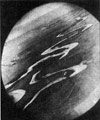|
|
|
| Missing In Action (MIA) | Prisoners Of War (POW) | Unexploded Ordnance (UXO) |
| Chronology | Locations | Aircraft | Ships | Submit Info | How You Can Help | Donate |
|
 JAAF c1939    Justin Taylan 2007 |
Location The Khalkhin Gol (Khalkhin River) is a freshwater river in eastern Mongolia. In Russian spelled Khalkhin Gol (Халхин-Гол). In Mongolian spelled Halhyn Gol (Халхын голын) meaning Halhyn River. Also spelled Khalkh, Khalkha or Khalkhyn. The Japanese referred to it as the "Halha River". The US official gazetteers and US maps (ONC F-9, TPC F-9A) spell the name "Halhin-Gol" or "Halhin-Gol". The Khalkhin Gol begins in the southern reaches of the Greater Hsingan Mountain Range and flows to the northwest near the border between Mongolia and Manchuria (Manchukuo) today China then turns to the west to empty into Buyr Nuur (Buir Núr, Lake Buyr, Lake Bor). The smaller Khalastin Gol (Khailaastai, Holsten River) running roughly east to west meets the river at a confluence area. In the 1939 battlefield area, the Khalkhin Gol is approximately 164' / 50m wide and roughly 6.56' / 2m deep with a sandy riverbed and a normal current of approximately 2.17 mph / 3.5 kph during the summer months. To the west is the present day settlement of Halgol (Khalkhgol) and Sumber. To the east is Nomonhan in Manchuria (Manchukuo) today China. Battle of Khalkhin Gol / Nomonhan Incident The border war during the summer of 1939 is known by different names to each of the combatants. In Russian known as the "Battle of Khalkhin Gol" (бой на реке Халхин-Гол). In Mongolia as the "Battle of Halhyn Gol" (Халхын голын байлдаан). Known to the Japanese as the "Nomonhan Incident". During 1939, the border between Mongolia and Manchuria was poorly defined and disputed. The Mongolian and Soviets claimed the border was east of Nomonhan, while the Manchukuaons and Japanese claimed it was along the Khalkhin Gol (Khalkhin River). In May 1939 Mongolian cavalry crossed the Khalkhin Gol into what the Manchukuaons and Japanese considered their territory, The Japanese responded by occupying the disputed area up to the river and an undeclared, small scale war escalated between the Soviet Union and Mongolia versus Japan and Manchukuo. In August 1939 the battle climaxed when Soviets forces under the command of Komkor Georgy Zhukov counterattacked and encircled the Japanese, who suffered a total of 18,000 losses and retreated to the original border. In early September 1939 , no further fighting or territorial gains were made by either side. On September 15, 1939 a cease fire was agreed upon by the combatants that would go into effect the next day. On September 16, 1939 at 1:10pm the cease fire went into effect officially ending the conflict. Afterwards, the border remained as the Soviet Union and Mongolia claimed it until the present day. Kawamata Bridge Located at the confluence spanning the Khalkhin Gol and Khalastin Gol (Khailaastai, Holsten River). Sümbur (Sumber, Sambur) Small town built by the Russians postwar on the western bank of Khalkhin Gol after 1991 combined with Halgol. Halgol (Halhgol, Khalkhgol) Small town built with Soviet aid money on the western bank of Khalkhin Gol after 1991 combined with Sumber. References Japanese Studies on Manchuria: Volume XI Part 3 Book B page 208 Thanks to Denys Voaden for additional information Contribute
Information Last Updated
|
Map Fallingrain |
| Discussion Forum | Daily Updates | Reviews | Museums | Interviews & Oral Histories |
|